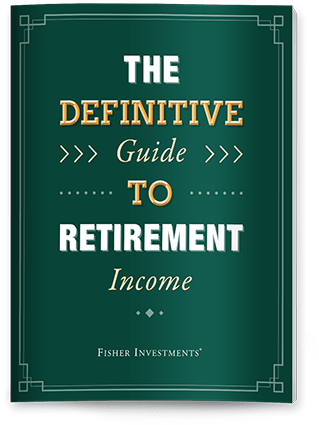Dividend Reinvestment: Important Considerations
The contents of this site should not be construed as tax advice. Please contact your tax professional.
Dividends, which represent a voluntary distribution of profits, are one way a company can reward its shareholders. A company’s board of directors determines whether to pay a dividend, the dividend payment schedule and dividend amount and format. Most companies pay dividends in cash, but some pay dividends with additional shares of stock. Dividend payouts may be recurring or one-off events.
While dividends can be an important component of an investor’s return, relying solely on dividend payments may not be the best way to meet your long-term financial needs. Below we outline important considerations to help you better understand dividends so you can determine if dividend stocks are right for you.
Consideration 1: Dividend-paying stocks are not ‘safer’ investments
For retirees in particular, dividend income may sound like an attractive way to build a steady income stream. However, it’s important to know that, contrary to what some investors believe, dividend-paying stocks aren’t necessarily safe, guaranteed or foolproof. Dividend-paying stocks are subject to market risks and volatility, just like any other stock. In addition to an attractive dividend, it’s crucially important to understand a company’s long-term business outlook and competitive advantages before investing.
Investors often think of cash dividends as free money. That isn’t necessarily the case. Theoretically, on the day a firm pays a dividend, the share price tends to fall by about the amount of the dividend, all else being equal.
This isn’t to say dividend stocks are bad, but they shouldn’t be considered automatically superior to low- or non-dividend-paying stocks.
Consideration 2: Taxes
Dividends tend to fall into one of two categories: ordinary or qualified. It is important to understand the potential differences in tax treatment between the two types. Dividends, by default, are considered ordinary, or unqualified, unless they meet special IRS requirements.
Ordinary Dividends
Ordinary dividends are taxed at the same rate as your ordinary income; hence the name. Therefore, your tax rate on ordinary dividends varies depending on your specific tax bracket. In most cases, though, this rate will typically be higher than the corresponding capital gains tax rate.
Dividends from certain entities are automatically classified this way, including special one-time dividends or those paid by real estate investment trusts (REITs), master limited partnerships (MLPs), tax-exempt organizations, employee stock options and money market accounts.
Qualified Dividends
Qualified dividends are taxed at long-term capital gains tax rates, which tend to be lower than rates for ordinary income. This means qualified dividends are taxable at rates of 20%, 15%, or even 0% depending on the recipients’ tax bracket.
According to the IRS, qualified dividends must come from a US company or qualifying non-US company and meet certain required holding periods for the stock. Holding period requirements vary by type of stock (common stock, preferred stock, mutual funds, etc.).

See Our Investment Guides
The world of investing can seem like a giant maze. Fisher Investments has developed several informational and educational guides tackling a variety of investing topics.
Consideration 3: Dividend Investing Drawbacks
Importantly, dividends aren’t guaranteed. Companies can reduce or eliminate dividends at any time. If you rely on dividend income for necessary expenses, you could find yourself in a difficult position if companies cut dividends during difficult financial periods.
Additionally, if you invest exclusively in dividend stocks, you may end up with a less-diversified portfolio. Dividend-paying stocks are often concentrated in sectors such as Consumer Staples and Utilities. If these sectors fall out of favor, portfolio returns may suffer.
Consideration 4: Generating Your Own Cash Flow Strategy
Dividends aren’t the only way of using stocks to generate cash flow. Instead of focusing solely on dividend income, you may be better off investing for total return (stock price appreciation plus dividends) and creating your own cash flow strategy.
One often-overlooked way to generate cash flow is to strategically sell stocks. We call this process “homegrown dividends.” By selectively selling stocks or other securities to generate cash flow, you may be able to maintain a well-diversified portfolio with more flexibility than if you were relying solely on dividend income.
While this strategy may involve modest trading commissions, it is a flexible and potentially tax-efficient way to generate cash flow, especially for larger portfolios. You can sell stocks at a loss to offset realized capital gains, or you can selectively pare back overweighted positions to maintain an optimal asset allocation.
For some investors, generating homegrown dividends could offer greater investment flexibility, potentially lower taxes, increased portfolio personalization and more consistent cash flow.
To Dividend, or Not to Dividend?
Dividends could play a role in your long-term investment income strategy, but don’t overlook the benefits of compounding growth or the flexibility of homegrown dividends. Whether you are in retirement or have many years to go before retirement, we believe a strategy focused on total return (price appreciation + dividends) gives investors the best chance to achieve their long-term financial goals.




